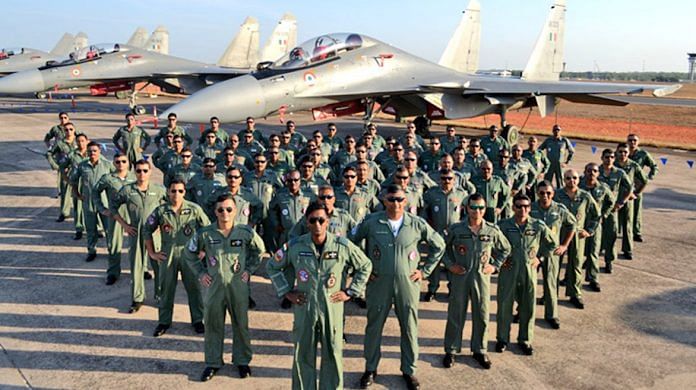Thank you dear subscribers, we are overwhelmed with your response.
Your Turn is a unique section from ThePrint featuring points of view from its subscribers. If you are a subscriber, have a point of view, please send it to us. If not, do subscribe here: https://theprint.in/subscribe/
We often hear about our Indian AirForce’s depleting squadron Strength and its alarming to know that we are running low as every year passes by (31 operational out of 42 required). Lot of Veterans in this area have discussed about the same and have highlighted the disadvantages we face when we don’t have the squadron strength that is needed at this point of time. In-fact, we have the lowest squadron strength since 1965. But how did we reach at this stage? Did we not foresee that we would be in this situation? Who is to be blamed? What is the Way out of it? All these are concerning questions which will point fingers at the entire defense organizations and governments over the years.
Our Airforce, specifically the fighter jets are from different countries and manufacturers, starting from the Soviet Union era MiG -21 Bison, SEPECAT Jaguar, Mirage 2000, our own LCA Tejas, our work horse Su- 30 MKI to the latest additions of Rafale. This has been a great challenge for our Air Force to maintain multiple platforms, multiple supply Chains, Integrations etc. Think about having our own missiles systems but no source code to integrate as we do not own these platforms. Consider relying on foreign vendors for supply of critical parts that needs replacement after certain flying hours; now multiply this across our range of fighter jets. Sounds like a mess, right? But this is the situation with most countries who does not have a fighter jet engine, isn’t it? The dominance in this area by specific players like Lockheed Martin (USA), Boeing (USA), The JSC Sukhoi (Russia) to name some is very evident and rest of the world was always buying from them. Our goal has always been to choose the best from the available options. For each specific role – be it Air Superiority, close Air support, ground attack, interception – we selected the most capable fighter jets. This approach naturally results in a variety of platforms and vendors, which is a logical outcome, makes sense?
Balanced Self Sustaining Yet Modern Air Force
The on-going Russia Ukraine war has taught us that self sufficiency in defense is what gives you an edge over your enemy. Russia has an upper hand here as it is more or less self sufficient when it comes to defense but think of Ukraine, mostly depended on NATO nations including USA to supply equipment to not lose the war. When you think who holds an upper hand, you will realize it is a matter of time the nation who is heavily dependent on other countries to meet wartime needs on a day-to-day basis are vulnerable to disruptions.
Now, consider India’s Situation in this context, the top three air powers – The United States, capable of supporting wars on multiple fronts, Russia currently engaged in conflict, and China, which aims to control sea routes and potentially invade Taiwan – requires vast number of fighter jets to achieve these objectives. In contrast, India primarily relies on its fighter jets for deterrence or targeted anti-terror operations. This clearly gives an idea on why Indian Air Force requirements are different when you compared to other nations. We are not a nation of aggression, nor we have expansionist point of view. We are a nation who promotes the idea of “vasudhaiva kutumbakam” which means “The World Is One Family.”
This is why the Indian Air Force has adopted a balanced, self-sustaining, yet modern approach through the “Atmanirbhar Bharat” initiative. The goal is to create an eco-system which is self-reliant and sustainable without sacrificing advanced technologies and modern practices. Take, for example our Tejas MK1A program which has faced delays due to the supply of GE F404 engines. Uncertainties like the COVID-19 pandemic, can disrupt global supply chains, and similar challenges may arise in future. This approach aims to build a resilient, “bulletproof” defense framework that minimizes such vulnerabilities.
Future holds strong and bright for the protectors of our Sky
With Tejas MK1A, MK2, AMCA and rapid development in indigenous drones, unmanned aircraft, Air defense systems, when we compare to any other nations, we are not far behind. If you understand our unique requirements, which differ from those of potential adversaries like China. That said, Indian AirForce might also investigate options such as an emergency procurement or a government-to-Government deal, like the one we did for 36 Rafale. Our partnerships with Safron, Dassault, Israel Aerospace Industries (IAI), GE and others reflect our commitment towards modernization, technology transfer (with ToT agreements) and self-sustaining ecosystem. By aligning with trusted partners, we reduce dependency and are poised to stand shoulder to shoulder with the world’s best.
These pieces are being published as they have been received – they have not been edited/fact-checked by ThePrint


